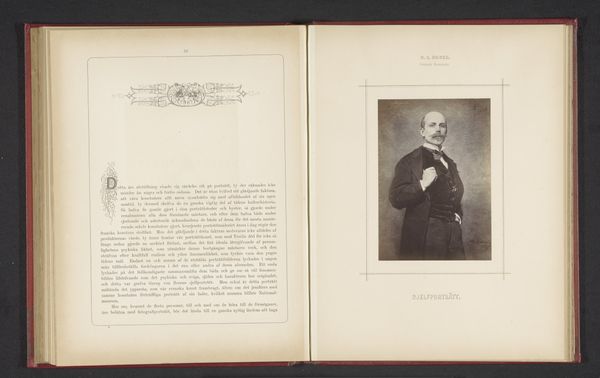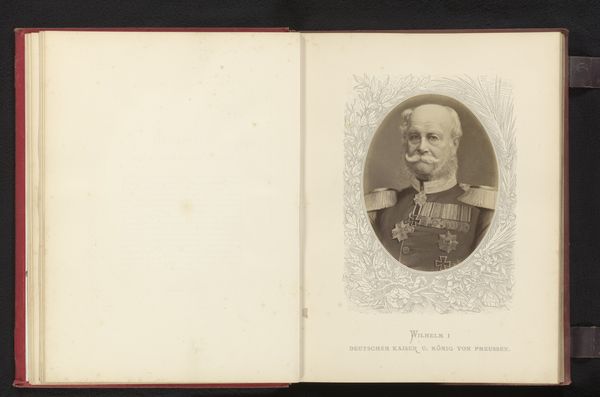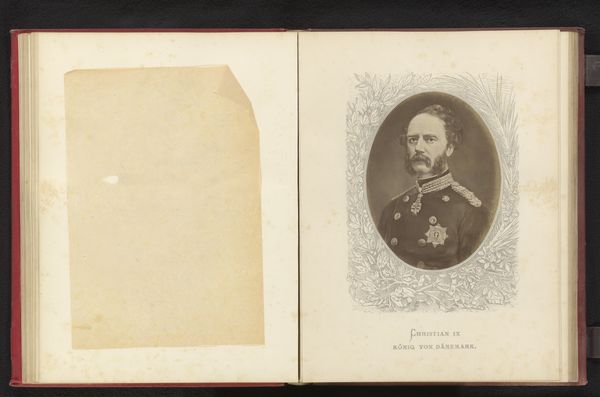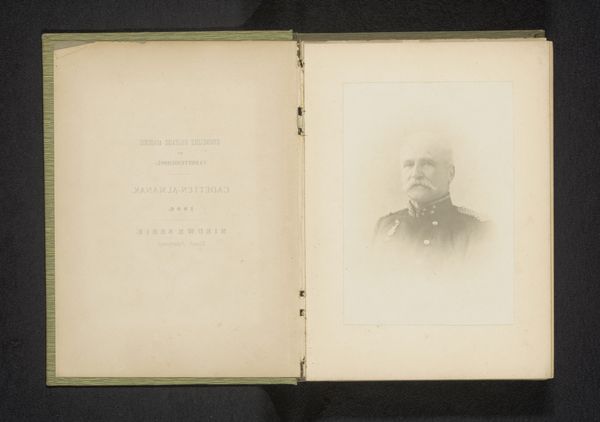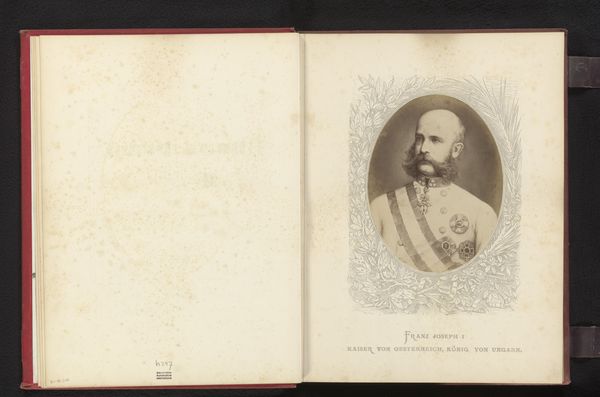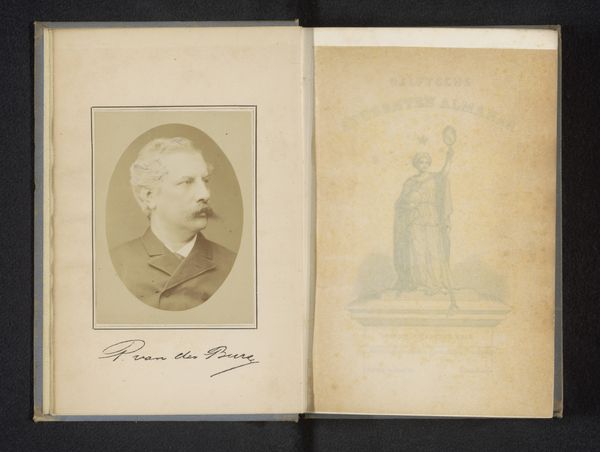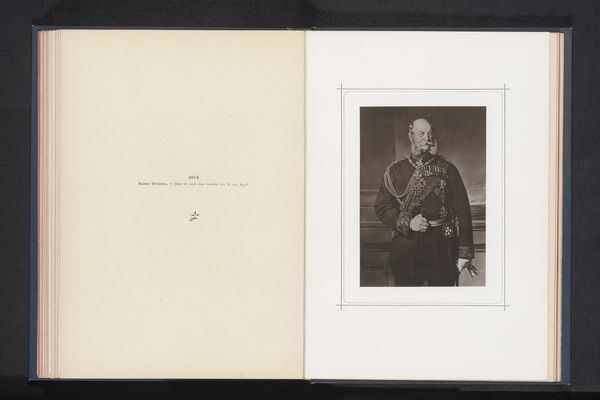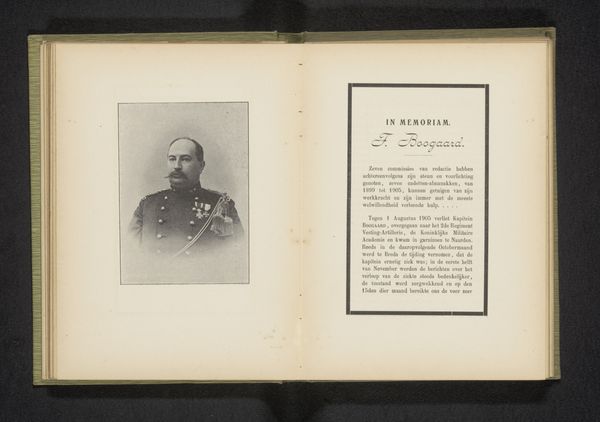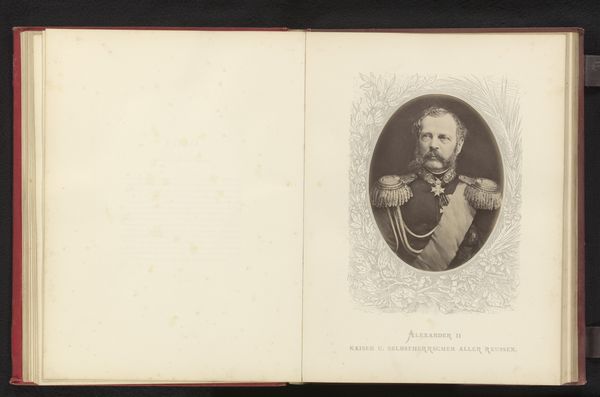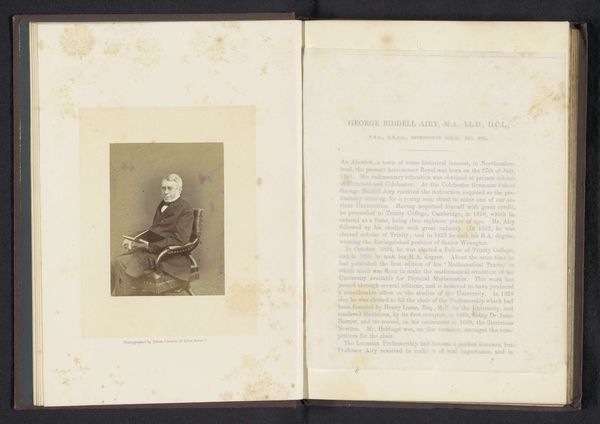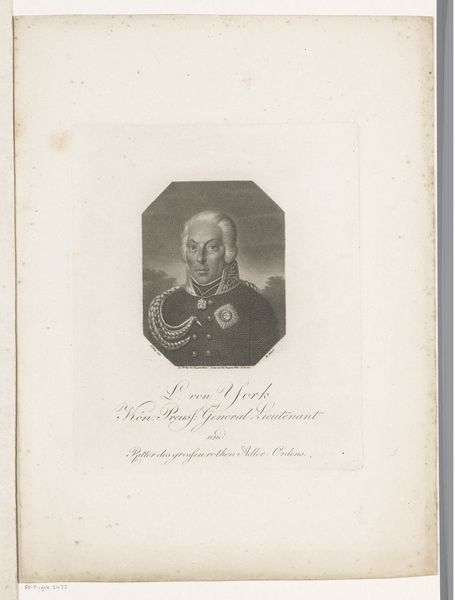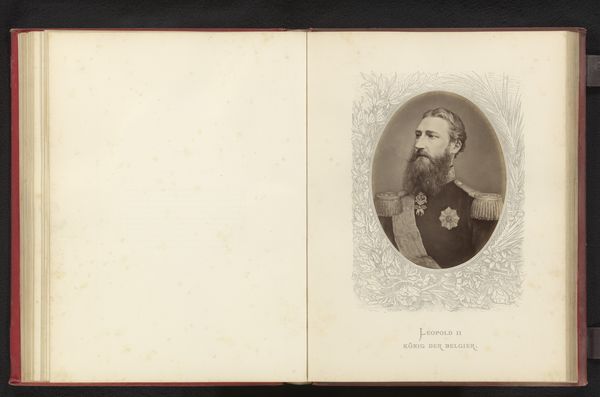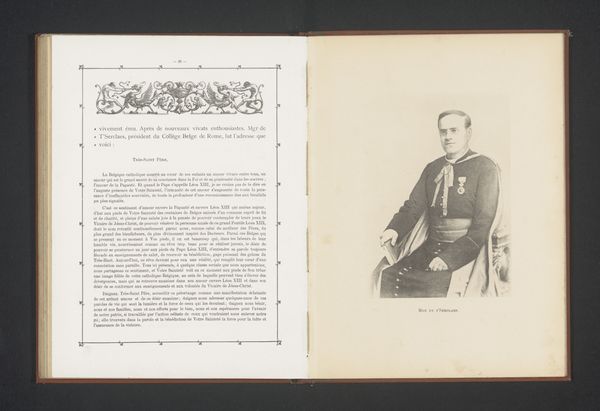
print, photography, albumen-print
#
portrait
# print
#
landscape
#
photography
#
history-painting
#
albumen-print
Dimensions: height 140 mm, width 97 mm
Copyright: Rijks Museum: Open Domain
This is a photographic portrait of Admiral David Farragut, made by Napoleon Sarony sometime in the late 19th century. It's a fascinating example of how photography was becoming a tool for crafting public image. Sarony, a master of the studio portrait, used the wet collodion process, which was the cutting edge of photography at the time. The process involved coating a glass plate with chemicals, exposing it in the camera, and then developing it, all before the plate dried. This painstaking method yielded a crisp, detailed image, which was then printed on paper. The sepia tone lends a sense of gravity to the image, which is important for a figure of Farragut's stature. The sharpness of the image also speaks to the sitter's status: it's a luxury to have this kind of attention paid to one's likeness. It is a reminder of the degree to which photography was intertwined with commerce and social standing. Sarony mass-produced images of celebrities, and this portrait demonstrates how the tools of mass production could also be used to create icons. The result is a carefully constructed representation of power and authority.
Comments
No comments
Be the first to comment and join the conversation on the ultimate creative platform.
